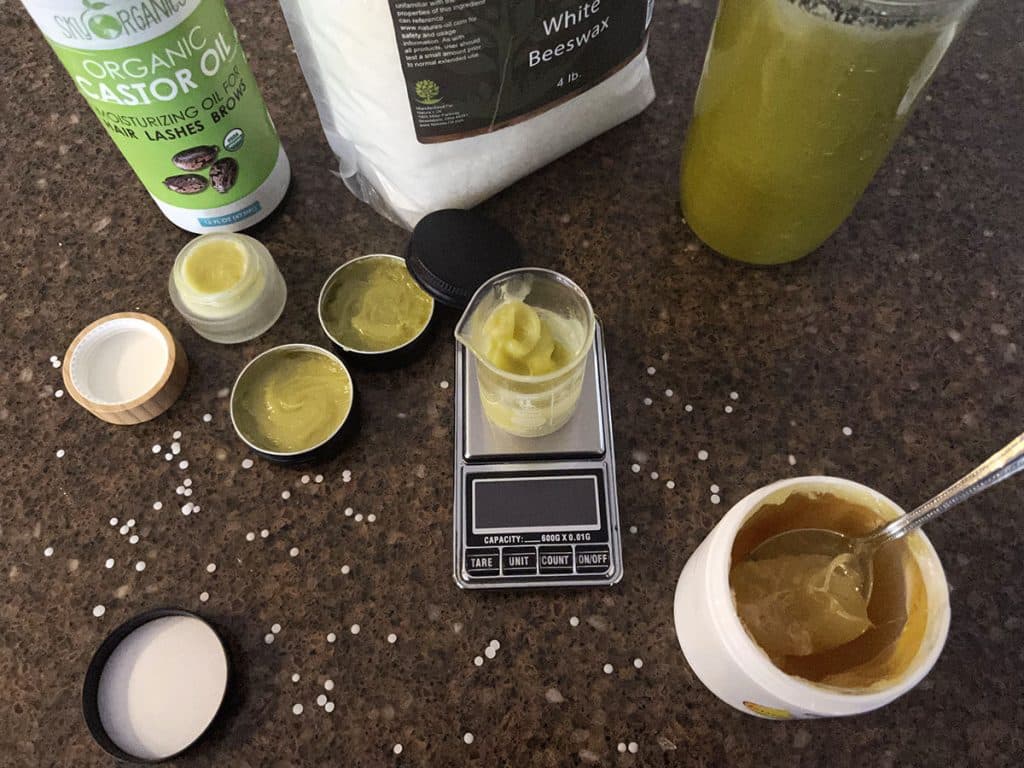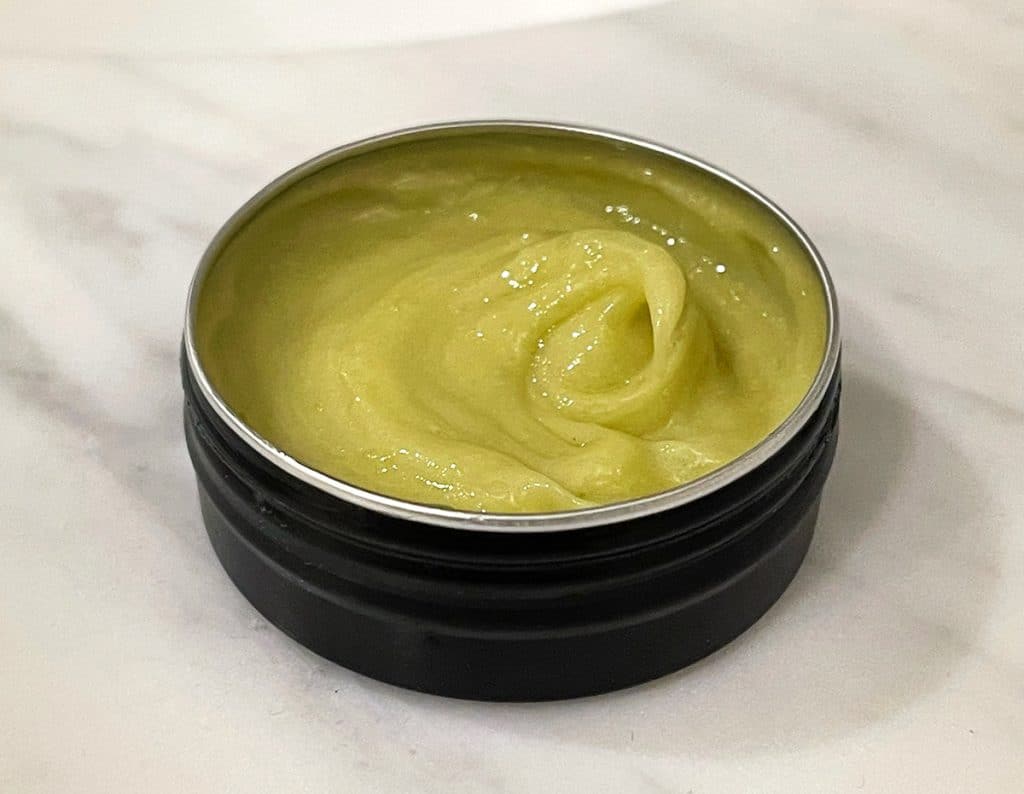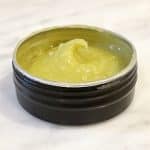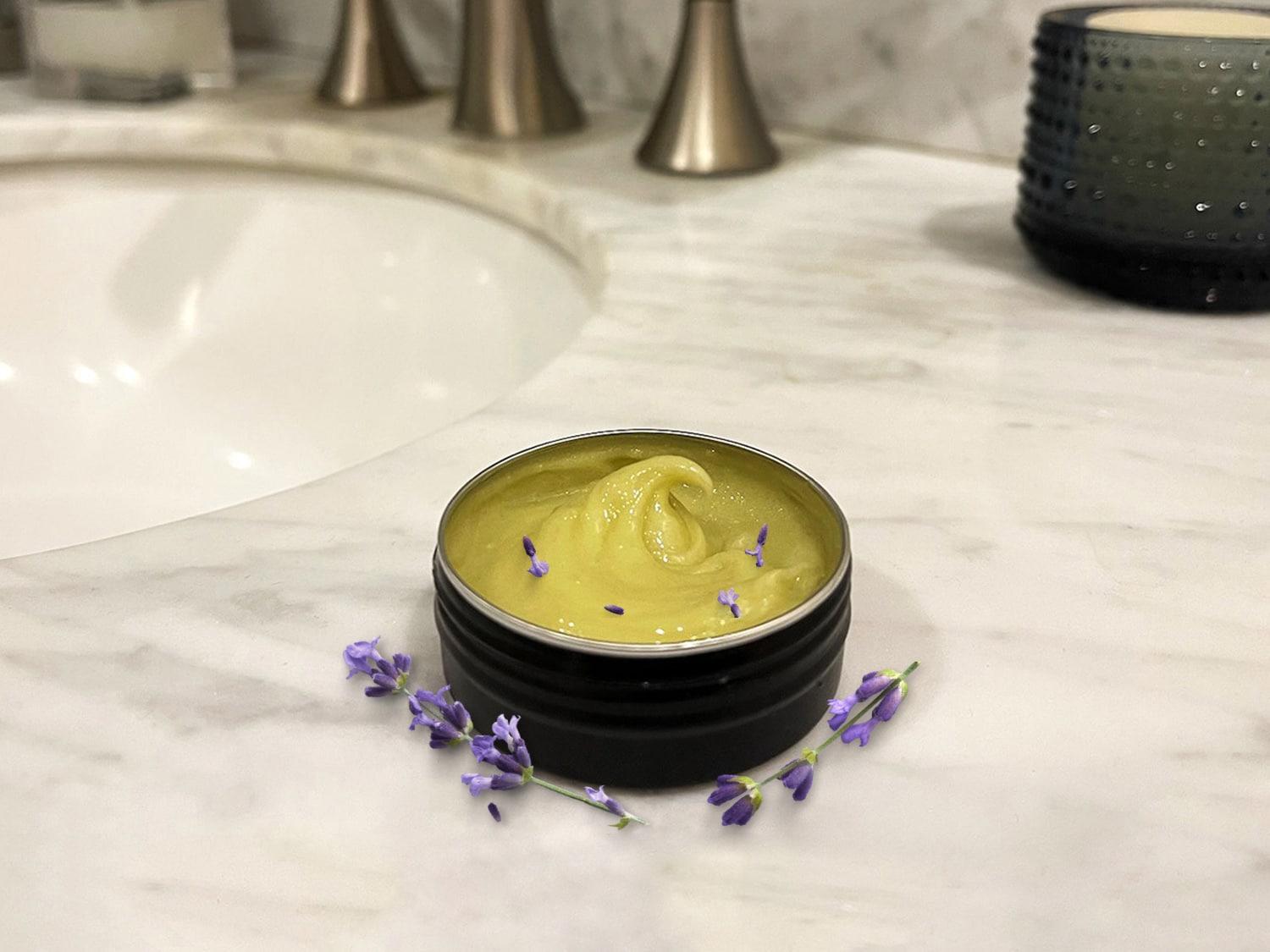Winter skin happens to everyone. Months of cold, dry air take their toll.
They may not look delicate, but thanks to an extra-thin stratum corneum and the absence of sebaceous oil glands, the skin on our lips is actually quite vulnerable. Our lips more susceptible to dryness, cracking and chapping — particularly during dry weather or in cold climates.
This time of year calls for a little extra TLC to help lock in precious moisture and add a protective barrier against the elements. A deeply hydrating overnight therapy can restore our lips natural moisture balance and help to smooth, soften and nourish the skin.
Lovely lovely lanolin
Lanolin is derived from Latin for wool (lana) and oil (oleum). Lanolin “wool wax” is produced by the oil glands of sheep and is a byproduct of the shearing process.
Lanolin is an especially useful ingredient in formulas designed to protect and heal painful cracked and chapped skin. It’s a common addition to natural diaper creams and nipple balms for nursing mothers and it’s equally great in lip applications.
Lanolin contains a range of vitamins and nutrients, including vitamin E, fatty acids and cholesterol, which help protect the skin from free radicals and environmental stressors. It’s also rich in antioxidants, which help to prevent oxidative damage and improve skin tone and texture. Fatty acids help to moisturize the skin and lock in hydration, while cholesterol strengthens the skin’s barrier and helps to keep it hydrated. The combination of lanolin’s highly moisturizing, antimicrobial and protective properties make it a great choice for treating dry, irritated, chapped skin.
It also feels like a natural companion to any formula made with tallow, don’t you think?
Yep, lanolin is yet another ingredient to add to our growing list of sebum mimics that are highly compatible with our own natural skin oils. Lanolin is composed of 90-95% wax esters.
Remember our trio of sebum mimicking oils: tallow, jojoba and squalane?
Jojoba oil is also primarily a wax [mono]ester, which plays nicely with our skin because our skin lipids tend to contain somewhere between 20 and 30% wax esters.
Both lanolin wax esters and jojoba oil wax monoesters are composed of high molecular weight long-chain fatty acids and alcohols. And while lanolin’s esters are a more complex mixture of fatty acids and alcohols, while jojoba oil wax monoesters are primarily composed of a single type of ester, they’re similar in terms of their emollient properties.
Obviously jojoba and lanolin are not interchangeable. Jojoba is a lightweight liquid wax and lanolin is very thick and sticky. That said, I wouldn’t hesitate to try substituting lanolin for the jojoba in formulas where a heavier barrier function is called for, as with this lip treatment. When applied to the lips, it forms a wonderful healing barrier that helps to trap in moisture and prevent further drying and irritation.

Herbal allies
Of course, there is no shortage of healing herbs that can beef up a therapeutic lip formula. (see what I did there?) I used a combo of comfrey and mullein in mine by infusing my tallow ahead of time. See Making Herbal Oil Infusions, Alcohol Intermediary Herb-Infused Oils and A Simple Way To Supercharge Your Tinctures & Oil Infusions for a refresher on how to make an infused herbal oil.
Some herbs to consider:
arnica (Arnica montana) – soothes inflamed, irritated, sore dry skin
calendula (Calendula officinalis) – speeds healing of damaged, cracked or chapped skin
chamomile (Matricaria chamomilla) – calms and soothes irritated skin
chickweed (Stellaria media) – eases irritated, swollen or sunburnt skin
comfrey (Symphytum officinale) – soothes irritated tissue
cottonwood bud resin (Populus tricocarpa) – achy chapped skin
dandelion (Taraxacum officinale) – nourishes dry, chapped or sunburnt skin and may protect against photoaging
devil’s club (Oplopanax horridus) – healing for eczema and burnt, dry skin
elderflower (Sambucus nigra) – speeds healing of cuts and skin irritations
fireweed (Epilobium angustifolium) – soothes sore, irritated or sunburnt skin
gotu kola (Centella asiatica) – repairs damaged skin and reduces scarring
lemon balm (Melissa officinalis) – therapeutic as an antiviral and helpful for those prone to cold sores
lavender (Lavandula spp.) – calms and soothes irritated skin
mint (Mentha x piperita) – refreshing, cooling and calming
mullein (Verbascum thapsus) – soothing to painfully dry, inflamed lips
plantain (Plantago spp.) – healing to cuts and scratches, anti-inflammatory
reishi (Ganoderma lucidum) – nourishes inflamed, burnt skin, and may protect against photoaging
sea buckthorn (Hippophae rhamnoides) – soothes dry, inflamed, sun damaged skin
self-heal (Prunella vulgaris) – therapeutic for cold sores and other wounds
St. John’s wort (Hypericum perforatum) – bruises, wounds, cuts and infections
willow (Salix spp.) – healing to sores burns and mouth ulcers
yarrow (Achillea millefolium) – helps heal sores, wounds and stops bleeding
A potent cosmetceutical
In addition to our wonderful plant-powered herbalceuticals, one of my favorite ways to supercharge a skincare formula is to add vitamin C. Vitamin C does some pretty amazing things for the skin, which makes sense because vitamin C is actually a component of a healthy epidermis!
Vitamin C helps to smooth and replenish tired skin, relieving dryness and protecting against free radicals and environmental stressors. It also encourages the formation of stratum corneum barrier lipids and helps to stimulate collagen formation and reduce the appearance of wrinkles and fine lines.
I can’t say enough good things about topical vitamin C.
As water soluble vitamin, however, vitamin C will not mix with a totally anhydrous formula like this one. You can’t just mix ascorbic acid into oil and wax and expect it to dissolve. No problem! Tetrahexyldecyl ascorbate is a special lipophilic (oil-soluble) form of vitamin C that has the added perks of improved absorption via the epidermis stratum corneum barrier and also being more stable than other forms of vitamin C (giving your lip treatment a longer effective shelf life!)
Since this is a specialty ingredient that most folks will not have laying around the house, it’s a totally optional addition. If you choose not to add it, simply replace the Tetrahexyldecyl ascorbate with a lightweight oil such as squalane or jojoba.
Lavender & chamomile
Finally, there’s a whole world of aromatherapy that would be appropriate here, but I chose good ol’ lavender and chamomile* essential oils for a couple of reasons. In addition to their affinity for supporting burnt, irritated or damaged skin, both lavender and chamomile are well known nervines that soothe stress, anxiety and helps you wind down for sleep.
Kind of perfect for an overnight treatment, don’t you think?
* Note: I find the scent of steam-distilled German chamomile essential oil to have an unpleasant sour smell. I vastly prefer the scent of CO2-extracted chamomile, which has a softer herbaceous scent that smells more like fresh chamomile flowers. The CO2-extracted chamomile is clear instead of deep blue, which is due to the absence of the constituent chamazulene. Instead of chamazulene, CO2 chamomile contains chamazulene’s precursor, matricin, which only converts to deep-blue chamazulene when heat is applied. Both matricin and chamazulene have similar anti-inflammatory benefits with matricin possibly having a bit more.


‘Winter Kiss’ Overnight Lip Rescue
5 Stars 4 Stars 3 Stars 2 Stars 1 Star
No reviews
Ingredients
- 7 g tallow, infused with comfrey and mullein
- 5 g lanolin
- 5 g castor oil
- 2.5 g beeswax
- 1 g honey
- 4 drops lavender essential oil
- 2 drops chamomile essential oil
- 2 g tetrahexyldecyl ascorbate (optional — if not using, replace with a lightweight oil like squalane or jojoba)
Instructions
- Combine all ingredients except essential oil and tetrahexyldecyl ascorbate (if using) in a small glass beaker or measuring cup.
- Gently heat until the oils and waxes are completely melted and liquid.
- Add essential oils and tetrahexyldecyl ascorbate (or replacement oils). Blend with a small whisk or mini mixer until the balm is well mixed and begins to thicken.
- Transfer to pot or cosmetic container of choice. Makes enough for a 1-oz jar ♥
Notes
Although honey is unlikely to cause allergic reactions, if you’re allergic to pollen or other bee-related products, use honey on your skin with caution.
Lanolin is another potential allergen. If you are allergic to wool, do not use products containing lanolin.
Topical chamomile may cause allergic reactions in those sensitive to plants in the Asteraceae family.
I recommend glass containers for storing homemade lotions and potions. Glass doesn’t leach chemicals and it’s easier to clean/sterilize after the product is used up and you’re ready to refill.
If you do choose to use a plastic container, be aware that essential oils tend to react with plastic, so even if you can get it “clean,” your container will likely not be reusable.



